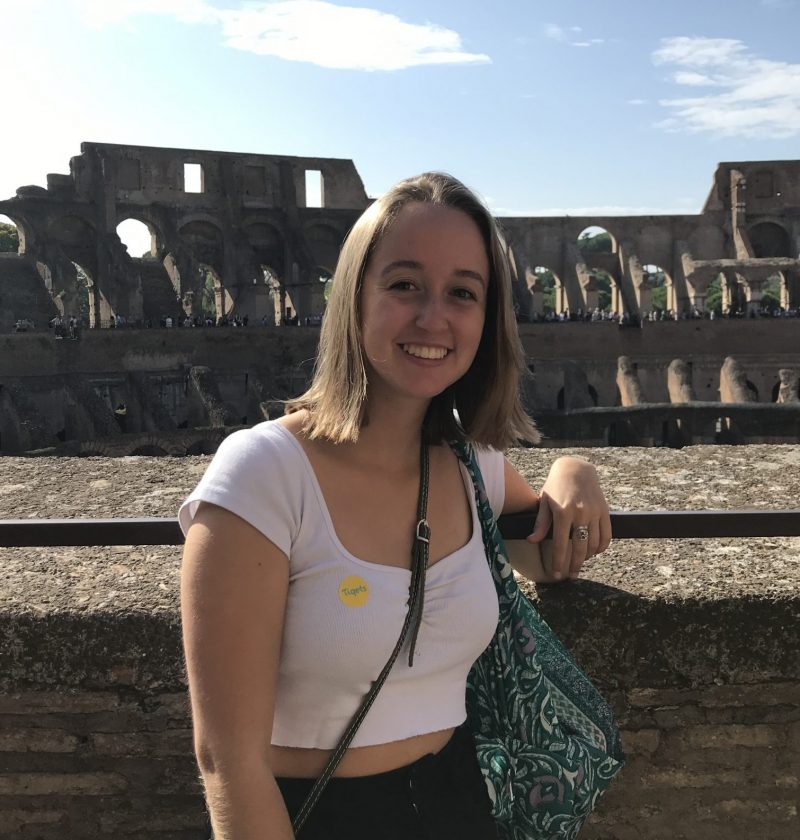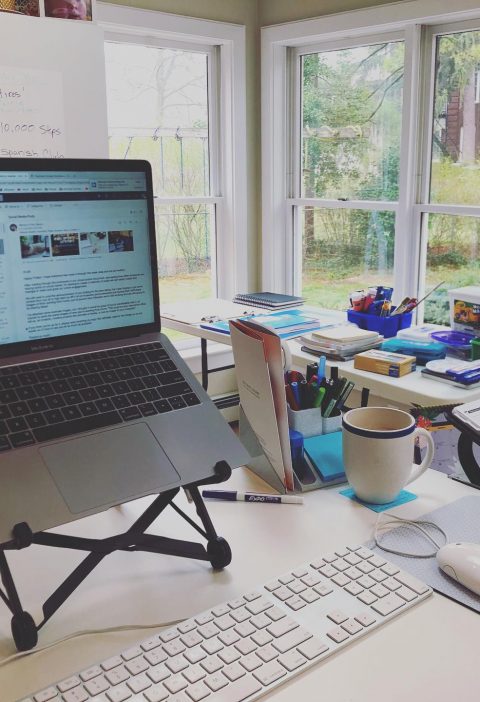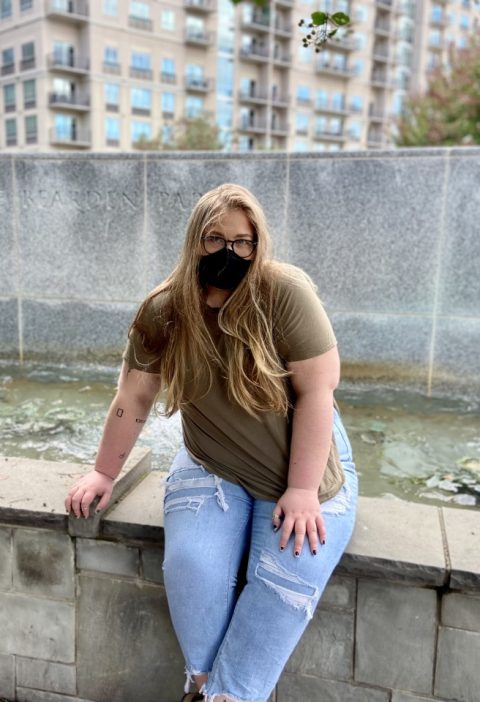Student Snapshot
Emily Benson, ‘21 American Studies Major
Before attending Dickinson College, I had no interest in studying art history– it just seemed too pretentious to me. Then my sophomore year at Dickinson, I stepped out of my comfort zone and into the halls of Weiss Center for the Arts, where I took a course titled Gender and Sexuality in Modern American Art. And I loved it. The historical contextualization of art pieces fascinated me. My favorite thing about American Studies is when my courses connect with each other in unexpected ways, and I saw a similar dynamic in this art history course. Part of this is because in both disciplines students are encouraged to use scholarly sources outside of the specific field of study. Interdisciplinary study is vital, in my opinion, for truly understanding either an artwork or an aspect of American culture. Our lives are interdisciplinary, why should our studies not be?
I became increasingly interested in art history after my semester abroad in Bologna, Italy, when I took my second art history class, which featured Italian art (would have been a crime if it did not!). Apart from just learning the historical context about the works, we got to get out of the classroom and try to keep up with our fast-paced professor as we bounced in and out of churches and museums around the city.

I loved our class trips to museums. I was able to see history and art right in front of my eyes; I knew then that this was something I wanted to keep experiencing when I returned to Carlisle. Thus, I began to research opportunities I could pursue at Dickinson where I could learn the histories and contexts of art pieces. Of course, the ideal place to do that was back in Weiss at the Trout Gallery. As a graduating senior thinking about career paths, I have begun to consider a profession in museum studies. Doing what exactly is still unbeknownst to me. However, the position of Museum Education Intern at the Trout Gallery struck a chord and sounded like something I would be interested in.
As a Museum Interpretation Assistant this semester, it was a tad different because of the virtual set up, but I have really enjoyed the opportunity to work on my writing, public speaking, and research skills in a workplace setting. The first thing I worked on was a children’s art project using surrealist concepts to create a greeting card, which I was able to be creative with while simultaneously expanding my own knowledge of surrealism and my writing skills for younger kids (not the formal writing for essays I am used to doing). My group this semester also led two Trout Un-Mutes (one about surrealism and another about exploring gender, identity, and sexuality through the photographs of Lissa Rivera), which are virtual, student-led events. They feature behind the scenes access to conversations, research, and creative inspirations at the Trout.
The main project I worked on this semester was a virtual artist talk with Steve Prince. After I introduced him, Prince talked about his art projects and the influences in his life that have shaped his work. At the end of his talk, I moderated questions from the audience including some I had prepared. I asked Prince his opinion about the importance of art in society today, which I have taken an interest in because I believe art is very representative and expressive of societal issues and an important tool to use for larger conversations and debates.
To prepare for the Prince talk, I researched the history of the artist and his past projects by watching and reading past interviews, as well as reading some of the conversations in scholarly work his artwork was mentioned in. After meeting with my team member (we work in teams a lot at The Trout), Gracyn, I condensed the many paths of research for this project down to the aspects of Prince’s work that really caught my attention, namely the connection between art and social justice and activism. After writing my preliminary introduction and questions, they were edited by Gracyn, the Curator of Education, and the Museum Communications and Events Coordinator. I, personally, enjoy the editing process because it helps to expand on areas that might not be my strong suit or areas of interest or research I may not have considered previously. Working as a team has helped me to see how I can work better with others; I understand when I need to step back, as well as step up in group projects.
As a graduating senior about to enter the “real world,” I know that I will reflect upon what I have learned through the Trout and this position to assist me postgrad in incorporating art into my everyday life.



